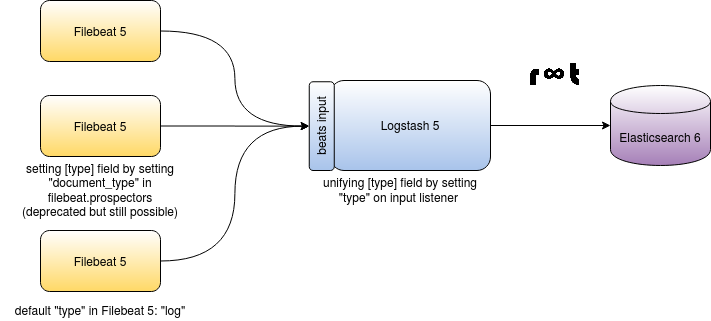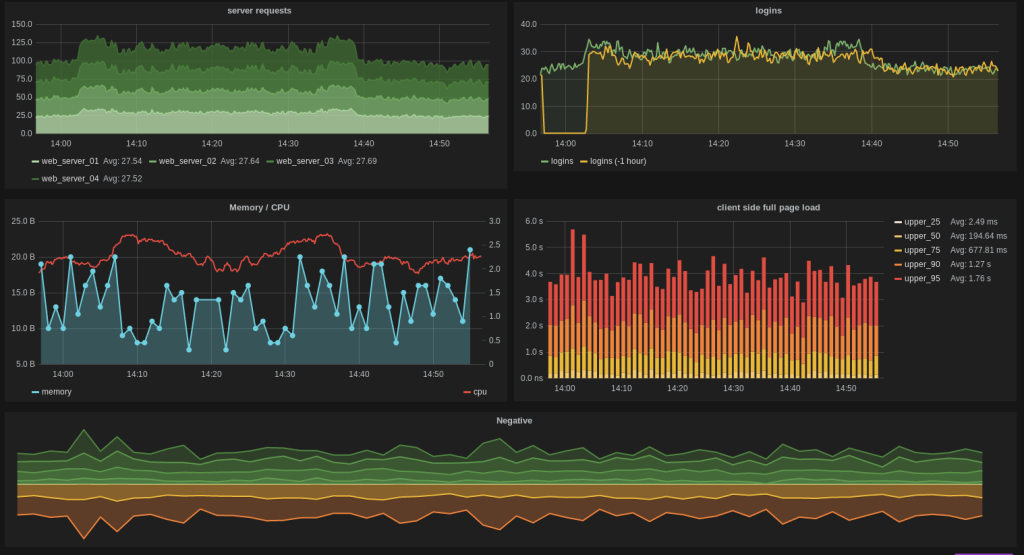

The change from 10k to 200 didn't affect the performance of the async publisher in Packetbeat. The bulk_max_size option used to have a default of 10000 and was recently reduced to 200 due to memory issues in Packetbeat when Logstash is not available (it can allocate 1000 x 10k events). I did some tests and could get Filebeat up to 16 K/s when running together with Logstash on the same, relatively powerful, machine (8 CPU threads), by increasing the bulk_max_size option of the Logstash output in Filebeat to 3000. For reference, the reported numbers were 3 K/s events by Filebeat, compared to the TCP input doing 39 K/s or the Logstash-Forwarder doing around 13 K/s (in a report from another user). Now, you can then create pipelines in Elasticsearch (or Logstash) that will be able to, based upon some characteristics send that data to different indices if they are vastly different, or you can put them in the same, but just watch out for things like mapping explosions (too many fields) as that can really impact performance.Īdditionally, you can have multiple inputs, so you can send things to syslog on port X, Y, and Z, and then tag them, so you can do this differentiation based on tag, or some other THING that lets you control how you want to manipulate them.There have been reports that the Filebeat -> Logstash communication doesn't seem to be as efficient as expected. In your use case, it would likely be better to just create a new input if you are not going to use the log input, as syslog, set the port, protocol, and host listener (As per the examples here: ), and then set an output to either Logstash or Elasticsearch (or any of the outputs here: ) There's inputs, some stuff happens in the middle, and there's at least one output. To an extent (and a gross simplification), they follow some similar patterns. However, one of the biggest differences is that beats have one output, max (At least last I checked), and Logstash can have as many as resources allow. One major difference is that you can have lots and lots of beats, but you tend to have only a few Logstash systems.īeats are more of a client, though they CAN act more in that server role, and syslog is one of those times. It's a workhorse.īeats, on the other hand, were small, purpose driven tools, written in golang, so they are, on the whole, smaller, faster, and lighter weight, and act as collectors and senders of data. It's written in Java, but makes a lot of use of jruby, so it has the power to do a lot. Logstash is a big, powerful, ETL and can work as a sort of hub for different data sets to come in, and go out, to multiple places. I work for Elastic - The company behind Elasticsearch and the Elastic Stack (which includes beats and Logstash, among other things) Eventually, I'll build an environment just for their logs and then let them find my actions as a final, but right now that seems like a pipedream).

I want to add all the logs from all my VMs and other servers/containers/networking equipment/etc in the network to ELK (I teach forensics to college students and they use my environment to complete homework and finals so I want to maintain logs of there actions.

Some background information that might be helpful. This is where I constantly get stuck on ELK. Would I change the -type: log to -type: syslog or add a new type underneath? # Paths that should be crawled and fetched. # Change to true to enable this input configuration. # Below are the input specific configurations. # you can use different inputs for various configurations. Most options can be set at the input level, so Would I need to different servers to serve as filebeats? Or will it create a new index for each item being passed to it?

I think I really just don't understand how I would add say Ubiquiti syslog and Unraid syslog to the same location and it would be able to filter those out without assuming the came from the same device. My issue is, I do not understand the difference between logstash and the *beat items. I am attempting to setup a syslog/log retention location for my homelab. First off, thank you for whatever help/recommendations you can provide.


 0 kommentar(er)
0 kommentar(er)
